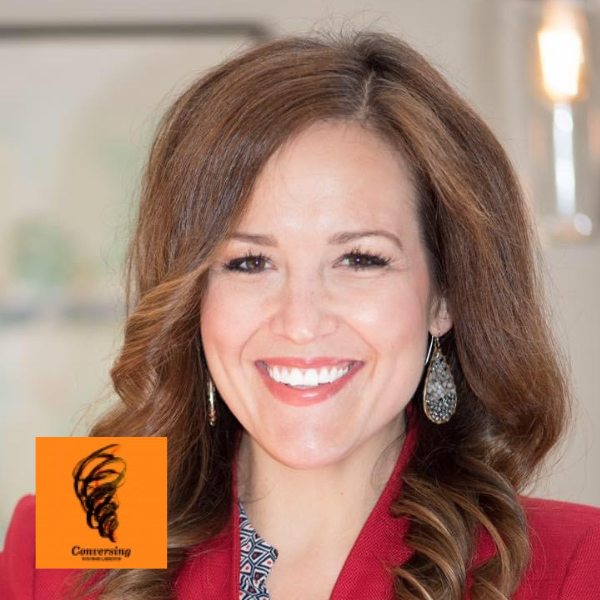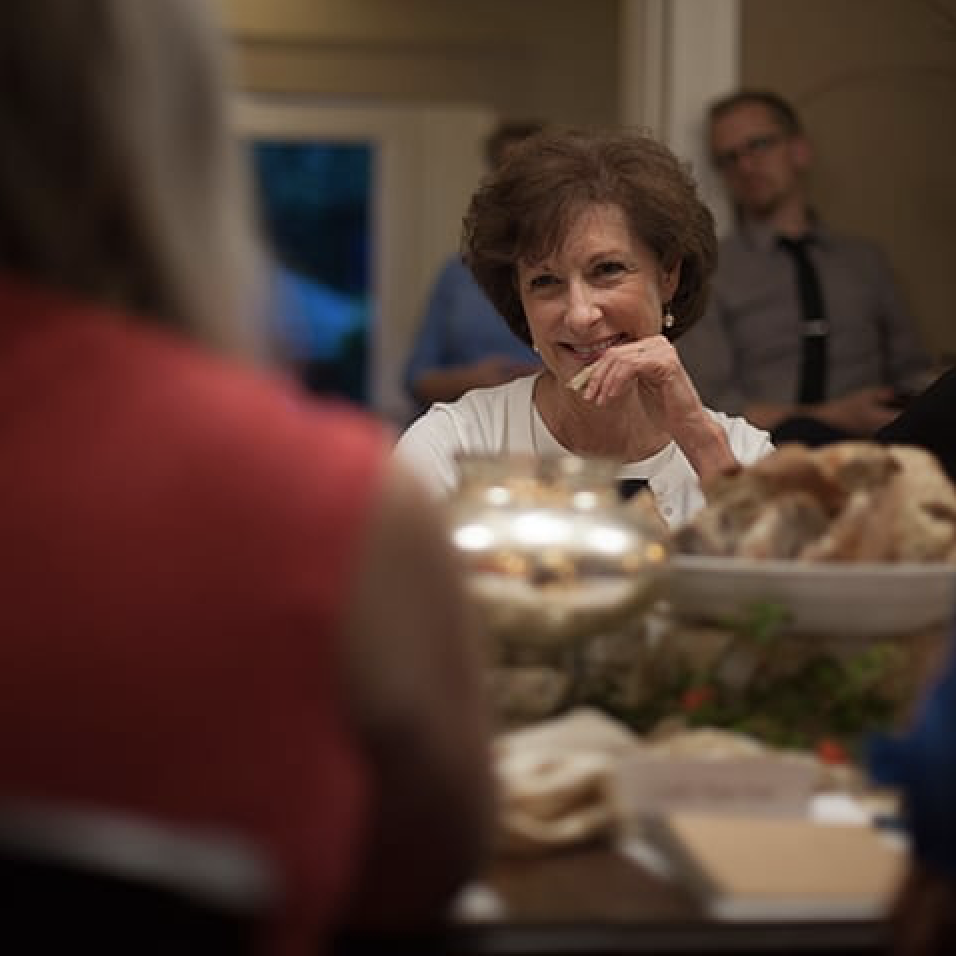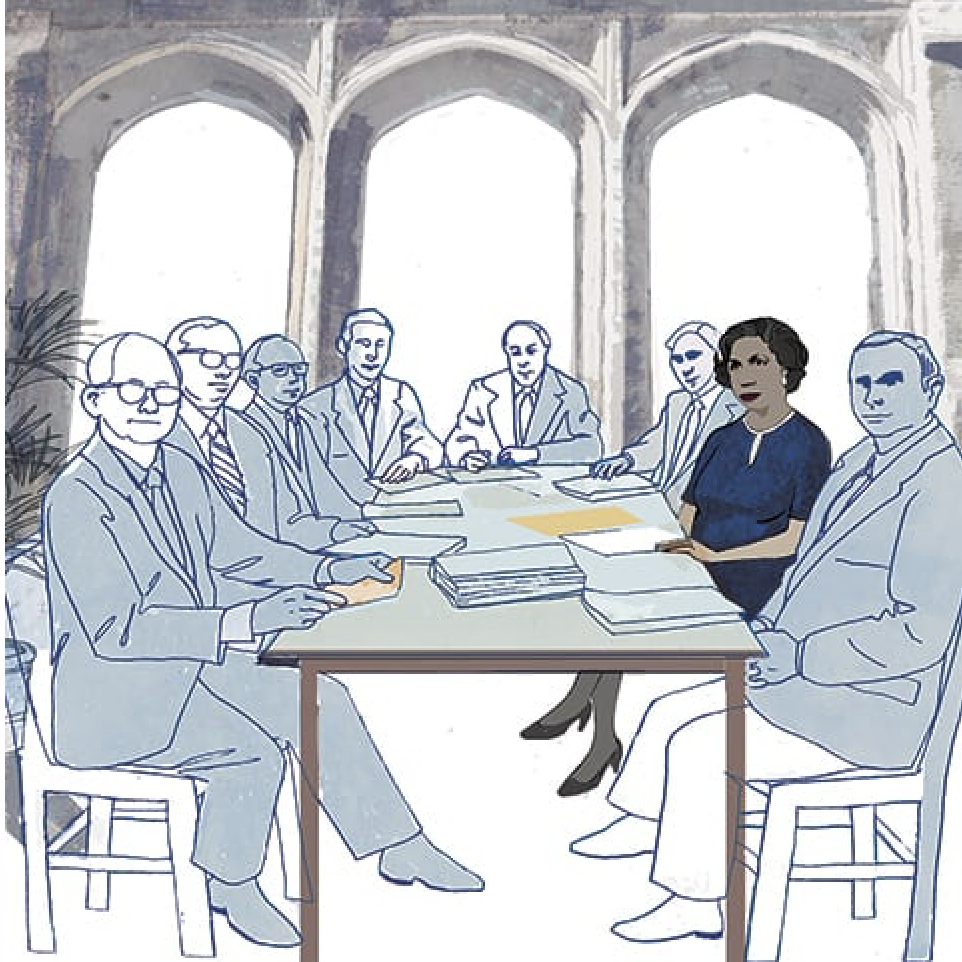Equally Called:
Women in Ministry
Read the biblical basis for
our institutional commitment here.

Women in Ministry: Equally Called
Read the biblical basis for our institutional commitment here.
Women in Ministry: Equally Called
Read the biblical basis for our institutional commitment here.
This is our commitment.
Fuller welcomes women equally into all its programs, and the seminary is committed to making its resources fully available to women as they pursue the professions and ministries to which the Lord has called them. All who teach and study in Fuller’s programs are expected to honor this commitment: under no condition may the authority of the classroom be used to challenge the calling of any student on the basis of gender.

Theologically Sound
Fuller sees a strong biblical basis for the equal partnership of women and men in ministry and leadership

Innovative Leaders
The women who teach and study at Fuller bring wise, creative leadership to their areas of expertise

A Multitude of Callings
From churches to mission fields to boardrooms, women go out from Fuller to impact a diversity of contexts
Our History
In 1947, when Fuller Theological Seminary was founded, it was assumed that all students preparing for ministry would be men; women, however, saw it differently. At their insistence, by the following year women were taking individual courses, and by 1950 a degree specifically for women—the Bachelor of Sacred Theology, a modified version of the Bachelor of Divinity—was created, with Helen Clark its first graduate in 1952. That year also saw the hiring of Fuller’s first faculty member, Rebecca Price, who taught and administered a second degree designed with women in mind, the Master of Religious Education. By 1966, all Fuller’s degree programs were opened to women. With the 1970s came the creation of an Office of Women’s Concerns, courses on women in ministry initiated and taught by Roberta Hestenes, and Fuller’s first female tenure-track faculty member, Hendrika Vande Kemp. “We made it clear that women are welcome, and they showed up,” said trustee Max De Pree about that time more than 40 years ago. “If you were a woman and you felt called to ministry, you could go to Fuller.” For decades now, Fuller has welcomed women equally into all its programs.
Women in Ministry
In the following article, we present Fuller Seminary’s position on women in ministry, as described and biblically supported by the late Professor of New Testament David M. Scholer.
Download the full article here.
An Introduction
Women have contributed much to the ministry of the Church throughout its history. However, their role in this area has never been free from controversy. Today, most church bodies are discussing the place of women in their ministries. Crucial to these discussions for many of us are the matters of faithful biblical interpretation.
Perhaps a few words should be said about the concept of ministry itself on the basis of the New Testament. Today, we tend to confuse our specific church traditions about ordination with the biblical concept of ministry. The New Testament says relatively little about ordination. It clearly portrays, however, the fact that the early church had a varied and faithful ministry arising from the fact that all of God’s people were “gifted” by the Holy Spirit for the purpose of building up one another (see, for example, 1 Corinthians 12:4–31; 14:1–19; Romans 12:3–8; Ephesians 4:7–16; 1 Peter 4:8–11). Any person could exercise ministry (which means, remember, service) who was called and gifted by God and affirmed by the body of Christ, the Church. Some were set apart in leadership positions and some were assigned specific tasks to accomplish, but the differences among ministries were not distinctions of kind. Eventually, certain types of affirmation were combined with certain functions of ministry to produce our current understanding of ordination.
Modern debates over the ordination of women often miss the crucial and basic issues of the holistic concept of the ministry of the Church reflected in the New Testament. Of course, no person should be ordained or given any responsibilities of ministry within the Church because of gender or for the sake of a “point.” On the other hand, we have affirmed in the Church that no person, called and gifted by God, should be denied any role of ministry or leadership in the Church because of one’s gender.
The Basis in Creation
First, man ('adam), a generic term meaning the “human person,” is created in God’s very own image (Genesis 1:26–27; 5:1–2). This creation in God’s image includes the identification of persons as male and female. This mutuality of women and men carries no suggestion of male headship or female submission.
Second, this mutuality is confirmed by the fact that both the man and the woman together, without distinction, are charged with responsibility for all of God’s creation (Genesis 1:26, 28). This equal partnership between man and woman is also present in the retelling of the creation story in Genesis 2. Here the man is found in need of a companion, but none of the creatures God has created qualify (Genesis 2:18–20). Thus, God differentiates man ('adam) into man ('ish) and woman ('ishshah), persons of separate male and female gender identity. The point of such a provision of companionship is to relate the male and female persons as equals, indicated by the common designations ('ish/'ishshah; the same word root) and the common identity of bone and flesh (Genesis 2:23). This is climaxed with the concept of mutuality expressed in the “one flesh” language (Genesis 2:24).
Some have interpreted Genesis 2:23, in which the man ('ish) calls the “bones of my bones and flesh of my flesh” woman ('ishshah), as an act of naming that demonstrates the headship or authority of man over woman. However, that type of naming does not occur until after the Fall when “Adam named his wife Eve”(Genesis 3:20).
Genesis 2 also indicates that the woman partner with the man will be an appropriate “helper” (Genesis 2:18). The word “helper” ('ezer), when used of a person in the Old Testament, always refers to God (in 29 places) apart from one reference to David. The word “helper,” then, is not to be understood as an expression of submission and service to man; rather, the woman as helper serves God with man.
The woman and man sin together (Genesis 3:1–7). Although it does not show in English translations, the serpent addresses the woman with the plural “you.” Genesis 3:6 states that the woman “gave some [of the fruit] to her husband, who was with her, and he ate it.” The fact that the man was with her (a phrase sometimes omitted from English translations!) indicates that both partners are together involved in disobedience to God. This is also seen by the fact that it is after both ate that it is said: “Then the eyes of both of them were opened” (Genesis 3:7).
The statements of judgment for disobedience (Genesis 3:14–19) are descriptive ones of future realities, which involved a supremacy/subjection relationship between man and woman. These statements are not creation mandates; rather, the relationship of mutuality, partnership, and equality portrayed in Genesis 1:1–3:7 is now sadly marred by sin.
Faculty Who Are Leaders in their Fields
Miyoung Yoon Hammer, Department of Marriage and Family chair, brings deep expertise in medical family therapy and practitioner self-understanding to her classroom
The Basis in Jesus' Ministry
In the time of Jesus’s ministry, women were usually regarded as subordinate and inferior in virtually every area of life. They were to remain at home, to be good wives and mothers, and to take no part in public discourse or education. Josephus, a Jewish historian, said: “The woman, says the Law, is in all things inferior to the man. Let her accordingly be submissive.” It was also said: “Better is the wickedness of a man than a woman who does good” (Sirach).
Jesus, however, by his teaching and actions, affirmed the worth and value of women as persons to be included along with men within God’s love and service. Jesus challenged “sexual put-downs” of women. In Jesus’s setting, the prerogative of divorce belonged almost exclusively with men, and virtually any reason could be used to justify divorce. Jesus tolerated no such “male chauvinism.” He recalled the “one flesh” concept (Genesis 2:24) of mutual partnership and God’s intention for marriage (Matthew 19:3–9). Although women were held responsible, in Jesus’s time, for all sexual sin, Jesus rejected this “sexism” with his dramatic indictment of men: “anyone who looks at a woman lustfully has already committed adultery with her in his heart” (Matthew 5:28).
Jesus reached out to women who were rejected. In spite of the laws regarding uncleanness, Jesus allowed a woman with a twelve-year menstrual problem to touch him, and he commended her faith (Mark 5:25–34). Jesus permitted a sinful woman to anoint and kiss his feet (Luke 7:36–50). Jesus challenged religious leaders by saying: “I tell you the truth, the tax collectors and prostitutes are entering the kingdom of God ahead of you” (Matthew 21:31). He also offered salvation directly to women who were known as adulteresses (John 4:4–42 and John 8:1–11).
In Jesus’s day responsible teachers were not to teach women. Nevertheless, Jesus taught women and included them in his group of committed disciples. He taught Mary of Bethany and commended her learning to her sister who was carrying out the traditional tasks (Luke 10:38–42). It was to the Samaritan woman that Jesus made his most explicit affirmation that he was the Messiah, and he shared with her his basic mission (John 4:4–42). According to Luke 8:1–3, many women were in Jesus’s band of traveling disciples. These same women were present at the crucifixion and burial and on resurrection morning (Luke 23:49, 55–56; 24:1).
Jesus affirmed the value of committed discipleship and obedience to God, even over the natural and valued role of mother: “My mother and brothers are those who hear God’s word and put it into practice” (Luke 8:21), and “Blessed [rather than his own mother] are those who hear the word of God and obey it” (Luke 11:28).
The women Jesus included became the proclaimers of Jesus as Savior and risen Lord. The Samaritan woman was responsible for evangelizing her town (John 4:39–42). All of the Gospels show that it was Jesus’s women disciples who were the first persons to declare the message of Jesus’s resurrection, central to the gospel in the early church.
Among Jesus’s disciples we know of seventeen men by name: the Twelve, Joseph Justus, and Matthias (Acts 1:23), Lazarus, Nicodemus, and Joseph of Arimathea. What is not so often noted is that we also know women by name from among his circle of devoted disciples: Mary the mother, Mary Magdalene, the “other” Mary, Mary of Bethany, Joanna, Susanna, and Salome.
Jesus’s inclusion of and ministry to and through women within his own life and teaching were a powerful witness to the early church of the partnership of women and men within its membership and ministry.
The Basis in the Early Church
Apart from documenting the widespread presence of women in the early church, the account in Acts presents us with three additional items of importance. First is the fact that when the Holy Spirit came in power and in fulfillment of God’s Word (Joel 2:28–32) both men and women were present (Acts 1–2). Peter interpreted the events of Pentecost to mean that the “last days” of God’s time had come and that God’s Spirit was poured out on both women and men enabling them to prophesy. This foundational role was significant in the early church (see Acts 21:8–9; 1 Corinthians 11:5). Throughout the history of the modern church, the events of Acts 2 have been one of the major arguments in favor of women in ministry.
Second, the involvement of women in the establishment of the Philippian church is noteworthy (Acts 16:11–40). Paul begins the church in Philippi, the leading city of its district, with a group of women gathered for prayer outside the city gate (Acts 16:13–15). The “place of prayer” here is probably to be understood as a synagogue. Clearly one of the leaders of this remarkable women’s synagogue was Lydia. She and her home became the center of the new Philippian church (Acts 16:14–15, 40). This data is very significant background for the two women of Philippi who worked with Paul in the gospel ministry (Philippians 4:2–3).
Third, Acts gives some indication of the importance of Priscilla (Acts 18:2,18, 26). She, along with her husband Aquila, instructed Apollos, who became a noted teacher in the church (Acts 18:26). There has always been debate over the significance of the fact that Priscilla taught Apollos at home rather than in the church, but it must be recognized that she did teach Apollos (see 1 Timothy 2:12).
A deeper theology for any calling
Fuller’s School of Mission and Theology programs are rooted in Scripture and the classical Christian faith tethered to a robust commitment to the church’s mission locally and globally—preparing students to serve in any vocational context with greater theological depth.
The Basis in Paul
Galatians 3:28, like Acts 2, has been cited for hundreds of years as a basis for women in ministry. Detractors of women in ministry often argue that Galatians 3:28 refers only to the spiritual reality of equal access to God through faith in Christ Jesus. The text does refer to this, but it clearly encompasses other realities as well. There are three traditional pairings, and they reflect the three basic social divides of hostility within the first century AD in the Roman Empire. Paul’s declaration would have had no less actual social impact than an American preacher’s statement in the 1950s that “in Christ Jesus there is neither Black nor White” would have had.
Further, the conflict of Paul and Peter recorded in Galatians 2:11–14 demonstrated that the declaration of “neither Jew nor Greek” had social implications in the life of the church. Paul’s letter to Philemon has similar implications for “neither slave nor free” in asking Philemon to accept Onesimus as a dear brother in the Lord just like Paul (Philemon 15–17)! Paul’s declaration about male and female had implications, too, for the life of the church. The point is not the obliteration of God’s created differences between male and female, but that sexual differentiation does not determine the participation in Christ’s Church for persons created in the image of God.
Paul also notes the mutuality of men and women in Christ in two striking passages in 1 Corinthians. In 1 Corinthians 7:3–5 Paul makes it clear that sexual relations between a husband and wife are matters of mutuality and equality in respect and in rights. Such a position grew out of the love and inclusiveness of Christ and was directly counter to the prevailing Jewish and pagan opinion in the Roman Empire that the husband had all the sexual rights over his wife. In 1 Corinthians 11:11–12 Paul includes a strong and explicit assertion of the mutuality of men and women lest his discussion about head coverings be misunderstood as against women’s participation.
The discussion of head coverings for women in 1 Corinthians 11:2–16 clearly implies and assumes that women, as well as men, engage in prayer and prophecy (1 Corinthians 11:5). The participation in prophecy is the “highest” gift in the Church because it is the means of edification, encourage-ment, and comfort in the Church (1 Corinthians 14:3). Such edification is the purpose of the Church’s life together and constitutes, under the Holy Spirit, the exercise of authority and teaching in the Church. Thus, Paul concludes the first part of his discussion on head coverings (1 Corinthians 11:2–10) by stating that women ought to have authority on their heads. First Corinthians 11:10 is rarely translated accurately in English (most often one finds “a sign of authority” or “veil”), but Paul asserts that women have authority, using his normal word, which always means the active exercise of authority (and never the passive reception of it).
Paul’s letters also mention twelve women by name who were coworkers with him in the gospel ministry. This is the most often neglected evidence from the New Testament relevant to the participation of women in ministry.
Three women are known as leaders of house churches (the only type of church there was in the first century!): Chloe (1 Corinthians 1:11), Nympha (Colossians 4:15) and Apphia (Philemon 2). To this group we can add Lydia, a Pauline house church leader known from Acts 16.
Paul stated that four women—Mary, Tryphena, Tryphosa, and Persis (Romans 16:6, 12)—had worked very hard in the Lord. The Greek word translated “work very hard” was used very regularly by Paul to refer to the special work of the gospel ministry, including his own apostolic ministry (1 Corinthians 4:12; 15:10; Galatians 4:11; Philippians 2:16; Colossians 1:29; 1 Timothy 4:10; see also Acts 20:35) as well as the work of others in the ministry, leaders and persons of authority in each case (1 Corinthians 16:15–16; 1 Thessalonians 5:12; 1 Timothy 5:17). Thus, for Paul, the term “work very hard” was not a casual term referring to menial tasks.
In Romans 16:3–4 Paul greeted Priscilla and Aquila. This husband and wife team is mentioned six times elsewhere in the New Testament. It is significant that Priscilla is usually mentioned first, since the cultural pattern would be to name the husband first. This may indicate that Priscilla was the more important or visible leader and may suggest that she had a higher social status and/or more wealth than Aquila. Paul indicated that he and all the Gentile churches were indebted to both of them. Paul designated Priscilla and her husband, Aquila, “fellow workers in Christ Jesus,” a term used regularly for other leaders in the gospel ministry: Urbanus (Romans 16:9), Timothy (Romans 16:21), Titus (2 Corinthians 8:23), Epaphroditus (Philippians 2:25), Clement (Philippians 4:3), Philemon (Philemon 1), Demas and Luke (Philemon 24), Apollos and himself (1 Corinthians 3:9), and several others (Colossians 4:11).
In Philippians 4:2–3 Paul mentioned two women, Euodia and Syntyche, whom he also classed “along with Clement and the rest of my fellow workers,” and noted that these two women fellow workers “contended at my side in the cause of the gospel,” an expression similar to the “worked very hard in the Lord” phrase applied to the four women noted in Romans 16. In view of Acts 16:11–40 it is not surprising that two such women leaders emerged in the Philippian church.
Phoebe, usually assumed to have been the one to deliver Paul’s letter to Rome, is warmly commended by Paul to the Roman church (Romans 16:1–2). Phoebe is designated as “a servant of the church in Cenchrea.” Although some have thought the word “servant” here means “deacon” (or “deaconess”), that is most unlikely since the other New Testament texts that refer to the office of deacon mention the office of bishop in immediate conjunction with it (Philippians 1:1; 1 Timothy 3:8, 12). Paul regularly used this term “servant” to refer to persons clearly understood to be ministers of the gospel: Christ (Romans 15:8), Apollos (1 Corinthians 3:5), Epaphras (Colossians 1:7), Timothy (1 Timothy 4:6), Tychicus (Ephesians 6:21; Colossians 4:7), himself (1 Corinthians 3:5; Ephesians 3:7; Colossians 1:23, 25), and generally (2 Corinthians 3:6; 6:4; 11:15, 23). Thus, Phoebe should be understood as well as the minister (leader/preacher/teacher) of the church in Cenchrea.
Paul identified Andronicus and Junias as “outstanding among the apostles” (Romans 16:7), an expression that includes them within the apostolic circle. Junias is a male name in English translations, but there is no evidence that such a male name existed in the first century AD. Junia, a female name, was common, however. The Greek grammar of the sentence in Romans 16:7 means that the male and female forms of this name would be spelled identically. Thus, one has to decide—on the basis of other evidence—whether this person is a woman (Junia) or a man (Junias). Since Junia is the name attested in the first century and since the great church father and commentator on Paul in the fourth century, John Chrysostom (no friend of women in ministry), understood the reference to be a woman Junia, we ought to read it that way as well. In fact, it was not until the thirteenth century that she was changed to Junias!
These thirteen women surveyed here (Lydia, Chloe, Nympha, Apphia, Mary, Persis, Tryphena, Tryphosa, Priscilla, Euodia, Syntyche, Phoebe, and Junia) provide clear evidence from Paul that women did participate in the gospel ministry, as did men. Paul’s common terminology made no distinctions in roles or functions between men and women in ministry.
One Commitment. Many Callings.
Since 1966, Fuller has helped to equip tens of thousands of women for their callings. Many of their stories serve as an enduring inspiration to Christians everywhere that all are equally called to deliver Christ’s hope and healing to the church and the world.
1 Corinthians 14:34–35
It should be recalled that Paul has already indicated in this letter—1 Corinthians—that women did participate in prayer and prophecy with the authority in the church (1 Corinthians 11:5, 10; 14:3–5). This fact alone shows that 1 Corinthians 14:34–35 cannot be a general, absolute, and timeless prohibition on women speaking in church.
It was common at one time to “dismiss” the evidence of 1 Corinthians 11:5, 10 (and a few would still argue this position). It was suggested that 1 Corinthians 11:2–16 did not refer to a meeting of the church but only to a private non-church gathering. The whole context of 1 Corinthians 11:2–14:40, the argument of 1 Corinthians 11:16, and the parallel between 1 Corinthians 11:2 and 11:17 make such an idea most untenable. Some have even suggested that 1 Corinthians 11:5 was only hypothetical, but such an approach is clearly an argument of desperation.
The silence enjoined in 1 Corinthians 14:34–35 must be a specific, limited silence. Numerous suggestions have been offered, but only the major alternatives can be reviewed here (some scholars, with slight evidence, have also suggested either that 1 Corinthians 14:34–35 was not written by Paul but was inserted by a copyist or that it is a question from Paul’s opponents in Corinth which Paul denounces in 1 Corinthians 14:36). One view is that the speaking prohibited here is mere babbling. There is, however, nothing specific in the context to support this meaning of “speak,” and such nonsense would certainly have been prohibited to all persons in the worship Paul described. Another view suggests that the speaking prohibited is speaking in tongues (glossolalia) since that is frequently mentioned in the preceding context (1 Corinthians 14). However, glossolalia is always referred to as “tongues” or “speaking in tongues” and never simply as speaking.
Probably the most popular view today among those who oppose women speaking with authority in the church is to identify the speaking prohibited with the judgment of the prophets mentioned in 1 Corinthians 14:29. Thus, it is argued that women may prophesy (1 Corinthians 11:5) but may not judge or evaluate prophecy. The evaluation of prophecy is seen as the truly authoritative level of speech in the church from which women are to be excluded.
This view has two major difficulties. First, the word “speak” in 1 Corinthians 14:34 has no implication within the word itself or in its immediate context (14:34–35) to support identifying it with the concept of prophetic evaluation. Second, the idea of two levels of speech in the church—prophecy and the judgment of prophecy—with the understanding that one is higher than the other and is for men only has no clear or implied support elsewhere in Paul. In fact, Paul’s own definition and defense of prophecy (1 Corinthians 14:1–25) implies directly that prophecy itself is authoritative speech of the highest level in the church.
The view that seems best to me is to understand the speaking prohibited here to women to refer only to disruptive questions that wives (usually uneducated in the culture of Paul’s time) were asking their husbands. This corresponds precisely with the resolution Paul offers (1 Corinthians 14:35): “if they want to inquire about something, they should ask their own husbands at home. . . .” Such disruptive questioning was also considered a disgrace in Paul’s day in which it was widely believed that it was morally indiscreet for any wife to say anything on any subject in public. This view of disruptive questioning also fits well the specific context (1 Corinthians 14:26–40) in which Paul is concerned about appropriateness and order, which permit genuine edification (note that 1 Corinthians 14:26 expects everyone to participate). Thus, there are actually three injunctions to silence (1 Corinthians 14:28, 30, 34), although many Bible translations use “silent” only in 1 Corinthians 14:34.
1 Timothy 2:8–15
First Timothy 2:8–15 is the paragraph in the New Testament that provides the injunctions (2:11–12) most often cited as conclusive by those who oppose preaching, teaching, and leadership ministries for women in the church. It is inappropriate, however, to isolate verses 11–12 from the immediate context of 1 Timothy 2:8–15. If any of the paragraph is perceived as culturally bound (as 2:8–10 often is) or as especially difficult in terms of Pauline theology (as 2:15 often is), it must be realized that these same issues must be confronted in understanding 2:11–14.
It should also be observed that 1 Timothy 2:11–12 is a general prohibition on teaching and authority exercised by women. It is not directed to only a certain level of persons (such as “ordained” in distinction from “non-ordained” or “pastors” as distinct from “missionaries”). Further, it is not limited to only certain styles of teaching (“preaching” as distinct from “sharing,” seminary teaching, or writing theological books). In other words, if 1 Timothy 2:11–12 were a transcultural, absolute prohibition on women teaching and exercising authority in the church, then it prohibits all such activity.
The word in verses 11 and 12 often translated as “in quietness” (11) and “silent” (12) is identical in Greek. The same term is used by Paul in 2 Thessalonians 3:12, which the NIV translates as “settle down.” The point is that this term, which is often assumed to mean only “verbal silence,” is better understood as an indication of proper order or acceptance of normal practice. The term translated “to have authority” (authentein) occurs only here in the New Testament and was rarely used in the Greek language. It is not the usual word for positive, active authority. Rather, it is a negative term, which refers to the usurpation and abuse of authority. Thus, the prohibition (2:11–12) is against some abusive activity, but not against the appropriate exercise of teaching and authority in the church. The clue to the abuse implied is found within the heretical activity outlined in 1–2 Timothy. The heretics evidently had a deviant approach to sexuality (1 Timothy 4:3; 5:11–15) and a particular focus on deluding women, who were generally uneducated (2 Timothy 3:6–7).
The injunctions are supported with selective Genesis arguments (1 Timothy 2:13–14), using Genesis 2 rather than Genesis 1 (2:13) and the fact of Eve’s deception (2:14, see the use of this in 2 Corinthians 11:3 for male heretics). The function of the Genesis argument is parallel to its use in 1 Corinthians 11:7–9 where it is employed to argue that women must have their heads covered in prayer and prophecy. In both cases scriptural argument is employed to buttress a localized, limited instruction. The concluding word of hope for women (1 Timothy 2:15) is an affirmation of the role of bearing and nurturing children, a role considered as the only appropriate one by many in the culture who believed women incapable of other roles as well. This conclusion (2:15) is parallel in thrust to 1 Timothy 5:3–16 and Titus 2:3–5, both of which are concerned with specific cultural expectations.
Integrating faith with the practice of psychology
As the institution that pioneered the thoughtful integration of psychology and Christian theology, Fuller’s School of Psychology & Marriage and Family Therapy trains students for their chosen vocations in an environment of clinical excellence, research innovation, and academic distinction.
Consistency and Balance
Two broad and basic issues of responsible biblical interpretation should concern us in this, indeed, in any issue—balance and consistency. In terms of balance, it is the total witness of Scripture that must inform our thought and action. In terms of consistency, it is crucial to approach our understanding of all biblical texts in the same way in order to offset as much as possible our blind spots and biases.
Opposition to women in ministry has often been mounted virtually on the basis of one Pauline text—1 Timothy 2:11–12. Whatever that difficult text and context means, it must be put in balance with all other biblical texts that bear on the same issue. This shows, in my judgment, that the 1 Timothy text does, in fact, speak to a limited situation.
Further, in regard to balance, one must struggle with starting points. For example, on the matter of “eternal security” of believers, does one read Hebrews 6:4–6 “through” Romans 8:28–39, or should the Romans text be read “through” the one from Hebrews? It has often been assumed without question that 1 Timothy 2:11–12 is the “control” (i.e., authoritative) text through which all other New Testament data on women in ministry must be challenged. It is more plausible, in my judgment, to approach 1 Timothy 2:8–15 through the accumulated witness of all the other Pauline passages on women in the church.
Consistency in interpretation is notoriously difficult. Yet, to push it here may help considerably in the attempt “to hear” the Scriptures. Why is it that so many persons insist that 1 Timothy 2:11–12 is a transcultural, absolutely normative text, but at the same time do not approach other texts in 1 Timothy with the same passion? Pressed in the same way, 1 Timothy 3:2 would rule out all single men from ministry, and 1 Timothy 5:3–16 would require churches to establish “orders of widows” for those sixty and older and would require that all widows fifty-nine and under remarry for the reasons of their sensual desires and idleness.
Most of us do not literally exchange the kiss of peace or holy kiss even though the New Testament commands it five times (Romans 16:16; 1 Corinthians 16:20; 2 Corinthians 13:12; 1 Thessalonians 5:26; 1 Peter 5:14). Most of us do not consider foot washing a necessity even though Jesus explicitly commanded it (John 13:14–15). Obviously, our inherited tradition and/or our sense of the cultural contexts of certain texts strongly inform our interpretations.
Finally, consistency and balance mean that we cannot impose on texts understandings that are not there. We cannot devalue the authority Jesus gave to his followers or the authority of prophecy in the Corinthian church just because they do not have the same structural pattern as that of 1 Timothy. We cannot divide the injunction of 1 Timothy 2:11–12 into two levels of authority imposed from our context so that women can be included in some activities but excluded from the “highest” levels.
In conclusion, it is my deepest conviction that the full evidence of Scripture and an understanding of balance and consistency in interpretation mean that we must rethink some of our traditions and reaffirm with clarity and conviction the biblical basis for the full participation of women in the ministries of the church. The underlying biblical theology of a “new creation in Christ” in which there is “neither male and female” is a powerful affirmation of the commitment to equality in the gospel, the Church, and all of its ministries. Jesus’s inclusion of women among his disciples and witnesses, the coming of the Holy Spirit on both sons and daughters, and Paul’s inclusion of women in his circles of coworkers in the ministry all affirm the full and equal participation of both women and men in all the ministries of the gospel.
This “Women in Ministry” article was adapted, with permission, from those authored by David M. Scholer for The Covenant Companion: December 1, 1983; December 15, 1983; January 1984; and February 1984 issues.
Resources from FULLER studio
A Conversation with Tara Beth Leach
Tara Beth Leach talks about her experiences as a woman in ministry and her new role as senior pastor of Good Shepherd Church in Naperville, Illinois.
Story Table on Women
Fuller’s first female dean, faculty, students, staff, and others gathered around the dinner table to discuss issues around women in leadership.
FULLER magazine on Women
This issue considered the many dimensions of women in ministry: how far we’ve come and how far we’re yet called to go.



